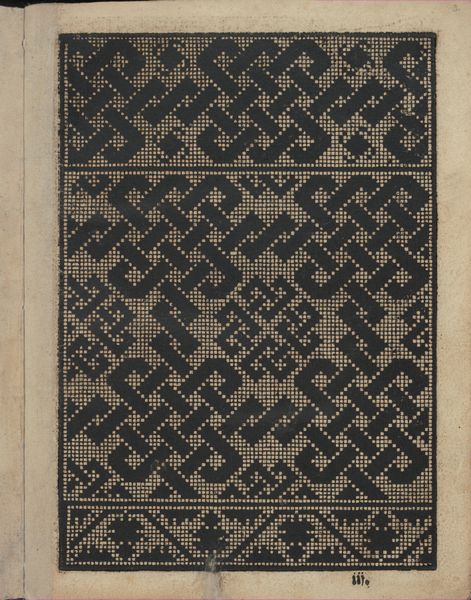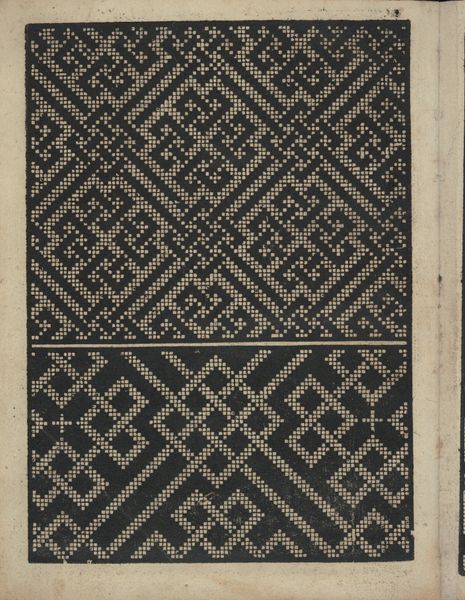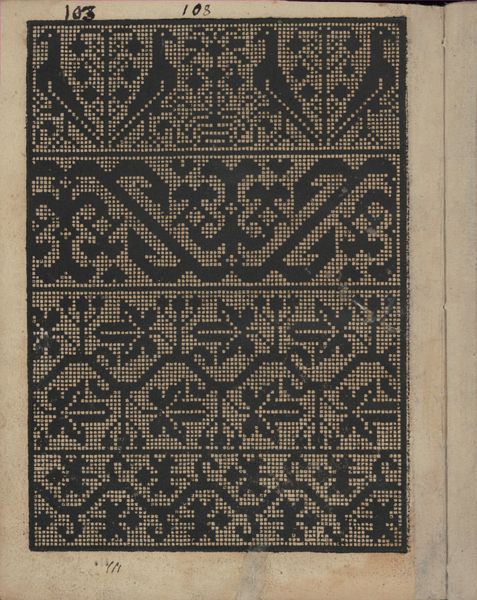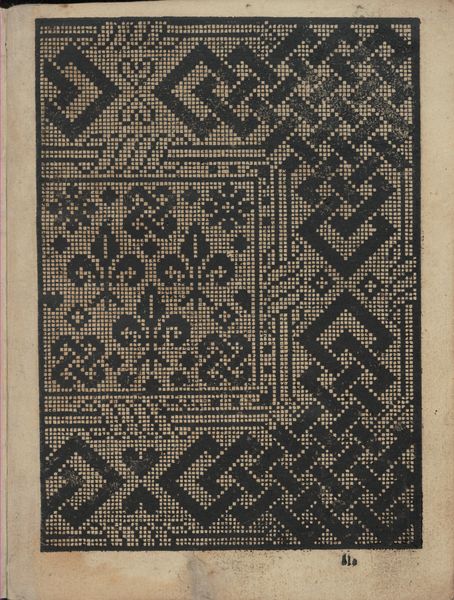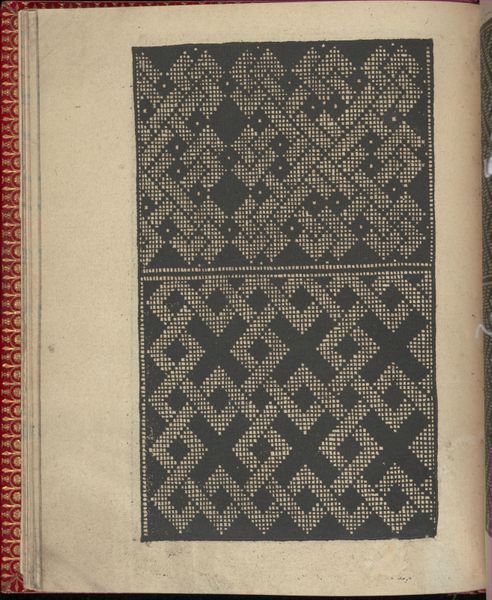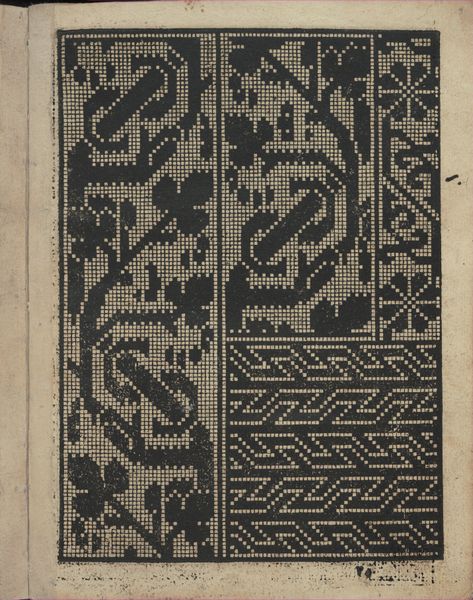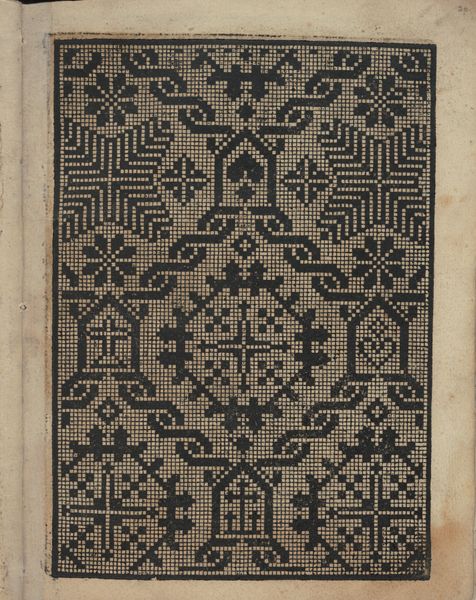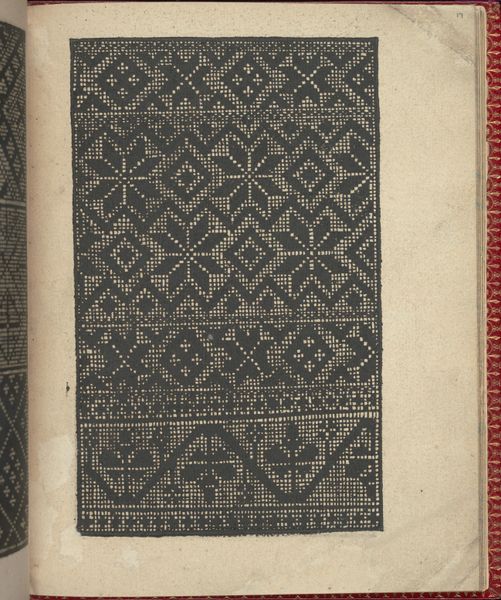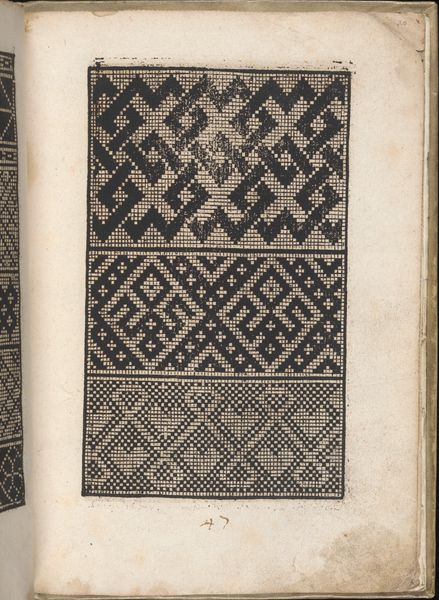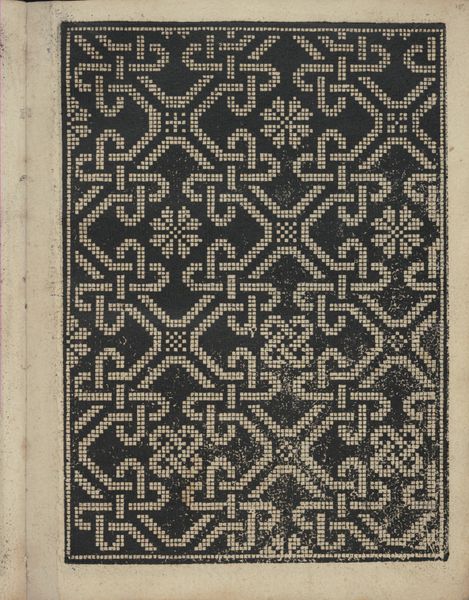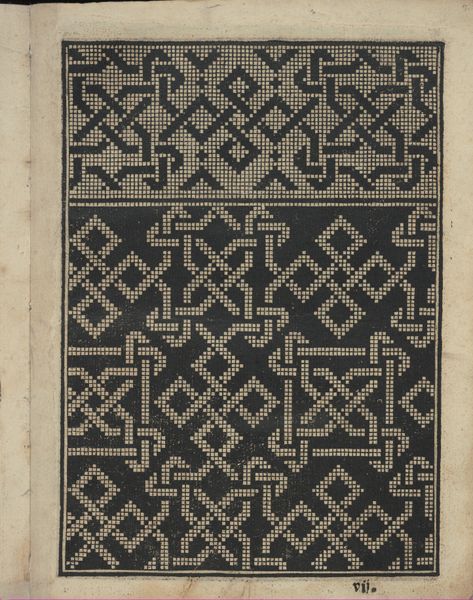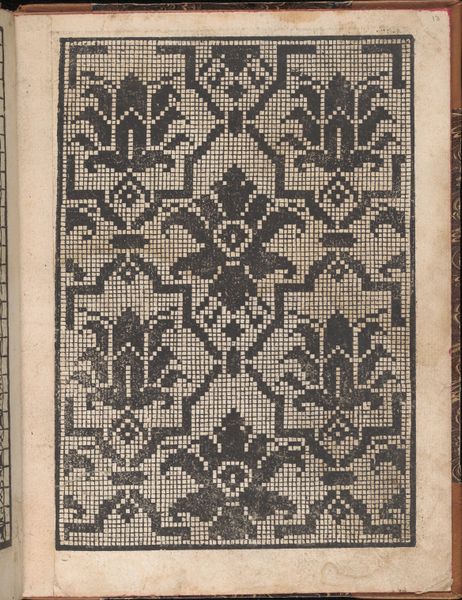
Libbretto nouellamete composto per maestro Domenico da Sera...lauorare di ogni sorte di punti, page 21 (recto) 1532
0:00
0:00
drawing, ornament, print, paper
#
drawing
#
ornament
# print
#
book
#
paper
#
geometric pattern
#
11_renaissance
#
geometric
Dimensions: Overall: 8 1/16 x 6 5/16 in. (20.5 x 16 cm)
Copyright: Public Domain
Editor: This page, dated 1532, comes from "Libbretto nouellamete composto per maestro Domenico da Sera...lauorare di ogni sorte di punti," a book of patterns. The geometric designs are printed in black ink on paper. I am drawn to the meticulous nature of the patterns; it looks like a textile. What do you notice when you look at it? Curator: What immediately jumps out is its function. This isn't necessarily high art; it’s a pattern book for lacemaking, fundamentally connected to craft production. The means of its reproduction are vital too: printmaking made these patterns accessible. We can analyze it from a materialist perspective by asking who was making the lace and under what conditions? Editor: That’s fascinating. So, you’re suggesting that beyond just being a pretty design, it’s directly linked to labor and economic activities? How would it be made and used? Curator: Exactly. This print acted as a template, guiding the hands of artisans –likely women, given the historical context of lacemaking – who transformed thread into valuable commodities. The repetitive geometric motifs reflect the constraints and possibilities inherent in needlework. Consider the economics of it - lace was incredibly valuable. Editor: So the print facilitates production by many hands? The means of production shape the design, and, through consumption of the lace, its broader distribution changes society? Curator: Precisely. This “ornament,” as it's sometimes simplistically labeled, served an integral role in early modern European society. Think of the skill and materials transformed through the labor, often invisible, creating these luxurious objects. This shifts the perspective from aesthetic appreciation to social and economic understanding. Editor: It's interesting to consider art beyond the purely aesthetic. I will view these patterns as instructions shaping materials and people. Thanks! Curator: And I hope that by reconsidering the labor involved we can approach a more informed viewing of design, as work, from this period.
Comments
No comments
Be the first to comment and join the conversation on the ultimate creative platform.
